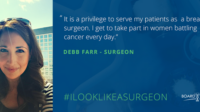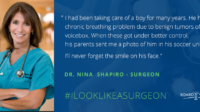Have you noticed that a large percent of your classmates aren’t choosing to specialize in primary care? According to The Match, only 44% of Family Medicine residency spots were filled across the U.S. in 2015. That’s not a pretty picture as the population ages and demand for primary care physicians grows. The federal government estimates that by the year 2020, the U.S. will experience a shortage of 20,400 full-time equivalent (FTE) physicians and some estimates double that. There are lots of openings for primary care physicians – why?
The Slow Hiss of a Paltry Reputation
The move away from primary care isn’t a wholesale evacuation, it’s more like a slow leak. In medical school the innuendo begins; primary care isn’t the choice of “smart” students. Residents observe their primary care preceptor’s frustration with 15-minute time slots for patients. On the hospital floor residents begin to experience the excitement of managing complex patients in various specialties. As the low pay of primary care comes into view it is judged against the specter of repaying enormous school debt. Add them together, and the pressures, pay and paltry reputation of primary care can make it an unappealing choice for residents.
The Issues
Is primary care for “smart” students?
When NPR spent a year investigating why students aren’t pursuing primary care, they discovered Baystate Medical Center in Springfield, Massachusetts, and its primary care residency program, developed to attract more students to family medicine. Co-director Gina Luciano said she believes that medical students’ “Type A” personalities prohibit them from pursuing a track that many consider as “average”.
“These highly competitive people have been at the top of their class since kindergarten. They get into residency and mentors are saying, ‘You could do cardiology, you could do critical care,’ it feels really good that there are prestigious things to go into in medicine,” Luciano said.
In other words, residents begin to feel that if they want to remain on the “A” list in medicine, it requires pursuing a specialty; becoming a family practitioner is tantamount to “settling”.
However, there are still residents who believe that primary care remains the lynch pin of medicine.
“Primary care is really the front line of medicine, taking care of the entire patient. That’s important because without primary care, there’s no one tying it all together. It’s like a great team with no quarterback. Without a primary provider, no one is coordinating, no one is seeing the whole picture,” 1st year resident, posted online, WHYY Newswork
And yet, even those who practice primary care warn against its mediocrity:
“As a physician, I can’t practice to the level of my training. Primary care has been demoted to very basic medicine. As a resident I took care of hospitalized patients with pulmonary, cardiac, and renal dysfunction and serious infection. I expected to manage such patients outside the hospital. In the typical outpatient setting, there simply isn’t enough time to deal with modestly challenging patients.” Posted online Newswork story
INABILITY TO BUILD RELATIONSHIPS WITH PATIENTS
Even though family medicine would seem the perfect place to build long-term relationships with generations of families, it isn’t that any longer. Medical residents don’t like what they see when they rotate through outpatient primary care.
- The primary care preceptor treats complex patient diagnoses in forced 15-minute time slots
- The physician is not the primary dictator of medical care
- The average physician sees 30 patients a day to fulfill practice and hospital requirements for patient billing revenue.
They are squeezed between caring for the patient, documenting in an electronic record, and fighting with insurance companies for the right care.
SALARY
Primary care salaries are in fact far lower than those of other specialties and the gap is widening.
Medscape’s 2016 wage survey found that residents in family medicine earned the least of all; $54,000, while critical care residents continued to earn the top salary of all residents: $62,154.
The federal government has dedicated millions of dollars to repaying student loans for those who choose primary care, but there is no guarantee that those programs will continue to be funded by congress. When medical students look at their debt load vs. potential salaries, it looks a lot easier to pay off loans on a specialist’s $500,000 salary.
The role of training in selecting a specialty
The majority of internal medicine residents are trained on hospital floors in large academic teaching centers in close contact with specialists. This creates a silo that does not develop an affinity for primary care. Rather, medical residents become comfortable with the skills necessary to become a specialist.
In a 2015 blog, Laurie Buchanan, then an internal medicine resident at Tufts Medical Center in Boston, noted the “fear of referral” as a reason not to choose primary care,
“Medical students spend four years seeing patients with interesting and rare diseases, usually at a tertiary medical center. The fear is that if a patient receives an interesting or rare diagnosis, s/he will be referred to a specialist. Though making the diagnosis may be intellectually stimulating, the primary care physician loses the satisfaction that comes with managing the patient.”
Several programs are trying to fix this with new primary care tracks, including Baystate Medical Center’s program, one at the Veteran’s Administration and The Center for Primary Care at Harvard.
A Love-Hate Relationship
The exciting and the mundane daily practice of a primary care physician is perhaps best explained by a rural “solo physician” who posted this comment to the WHYY NPR story on why young physicians are not choosing primary care. It’s worth reading. Not only is it the story of a rural physician, it’s the story of what used to be the heart of America.
“The need is rising rapidly, yet the system is making it literally IMPOSSIBLE to practice. Is anyone ready to listen?
AND, rural medicine affords a physician to really “jump in”. You know your patients really well…and the breadth of medicine you practice is really broad.
I do: ER, OB, SURGICAL, INPATIENT, NEWBORN, GERIATRICS, NURSING HOME, AND CLINICAL.
I provide: colonoscopies, EGDs, Cesarean sections, Postpartum tubals, vasectomies, and endovenous ablations. I also help cover the ER, delivery babies (VBACs too), care for my inpatients, see nursing home patients, do house calls, and carry on four days of clinic a week.
I also handle the management issues, fight with the government and insurers (and this is becoming a nearly impossible task), and take care of the computer IT work on site as well.
I believe I routinely work 65+ hours on average per week. I love what I do. I know my patients well and provide them with board certified, up to date, holistic, womb to tomb care. Care to join me
Unfortunately, the new government interventions, requirements, regulations, and intrusive programs….are literally going to cause me to have to quit. I simply cannot do what they are requiring…and sadly what they are requiring has precious little to do with patient care.”





